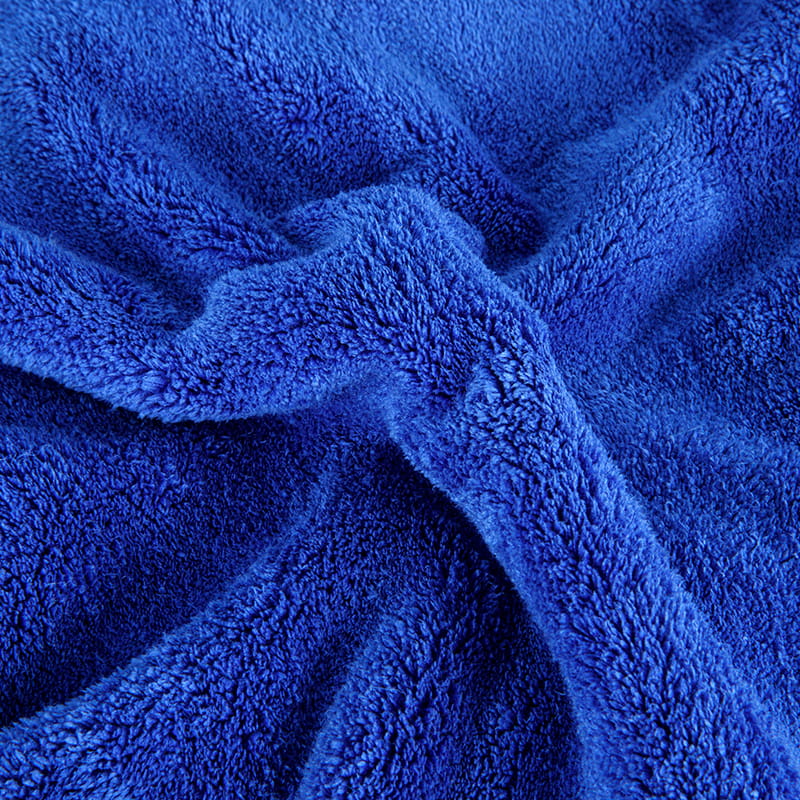We are a national high-tech enterprise. At present, there are many kinds of self-woven and cooperatively processed fabrics, including microfiber warp-knitted towel cloth, weft-knitted towel cloth, coral fleece, etc.
Addressing concerns about harmful chemicals in beach towels and ensuring they are safe for users involves several steps and considerations. Here are some guidelines that manufacturers can follow to ensure the safety of their beach towel products:
1.Compliance with Regulations:
Ensuring the safety of beach towels begins with strict adherence to regional and international regulations governing textile manufacturing. Familiarity with standards such as the Consumer Product Safety Improvement Act (CPSIA) in the United States is fundamental. Compliance with these regulations forms the cornerstone of responsible production practices.
2.Material Selection:
Choosing the right materials is pivotal. Opt for natural fibers like organic cotton, which are grown without harmful pesticides and genetically modified organisms. These materials not only ensure the safety of users but also promote sustainable and eco-friendly practices in the industry.
3.Dye and Printing Processes:
Careful consideration of dyeing and printing processes is crucial. Water-based dyes, free from toxic chemicals, are preferred. These dyes provide vibrant colors without compromising safety. Additionally, digital printing technologies offer precise designs without the use of harmful substances, aligning with modern eco-conscious practices.
4.Avoid Harmful Chemicals:
Eliminate the use of hazardous chemicals such as formaldehyde, phthalates, flame retardants, and heavy metals (e.g., lead, cadmium). Regular testing of materials for the presence of these substances is imperative. Implementing a stringent policy against their usage underscores the commitment to producing safe beach towels.
5.Testing and Certification:
Regular third-party testing by reputable organizations is essential. Certifications from globally recognized entities like OEKO-TEX or GOTS provide assurance of product safety. These certifications validate that the beach towels meet stringent criteria regarding harmful substances, underscoring the dedication to quality and user safety.
6.Quality Control:
Implement a rigorous quality control process at every stage of production. Continuous monitoring ensures that materials and manufacturing processes adhere to safety standards. Quality control personnel should be well-versed in identifying potential risks and rectifying them promptly, maintaining the integrity of the final product.
7.Educate Suppliers:
Collaboration with suppliers is critical. Educate them about the importance of supplying materials that meet safety standards. Establish clear guidelines, conduct supplier audits, and foster open communication channels. Suppliers should understand the non-negotiable stance on harmful substances and align their practices with these expectations.
8.Transparent Labeling:
Transparent labeling instills confidence in consumers. Clearly articulate the materials used, manufacturing processes, and certifications obtained. Informative labels empower consumers to make informed choices, showcasing the brand's commitment to transparency and user safety.
9.Recall Protocols:
Develop comprehensive recall protocols. In the unlikely event of identifying a safety concern post-production, having an efficient recall system in place is indispensable. Rapid response, clear communication, and corrective actions demonstrate accountability and prioritize user safety above all else.
10.Consumer Education:
Empower consumers with knowledge. Provide easily accessible information on the company website, product packaging, or promotional materials. Educate consumers about the significance of safe textiles and what to look for when purchasing beach towels. Informed consumers become advocates for safe products, fostering brand loyalty and positive word-of-mouth.
11.Regular Updates:
Stay abreast of emerging research and advancements in textile safety. Regularly update manufacturing processes based on the latest findings and technological innovations. Proactive engagement with industry developments ensures that the production methods remain cutting-edge while prioritizing user safety.


Size: 61*91.5CM
Colour: Black, red, pink, blue, brown
Main classification: Car, home
Main ingredient: Polyester
Main ingredient content: 85% polyester: 15% nylon
Material: Superfine fiber
Yarn craft: Single yarn
Yarn specification: 300D

 English
English Espaol
Espaol русский
русский عربي
عربي 简体中文
简体中文
















